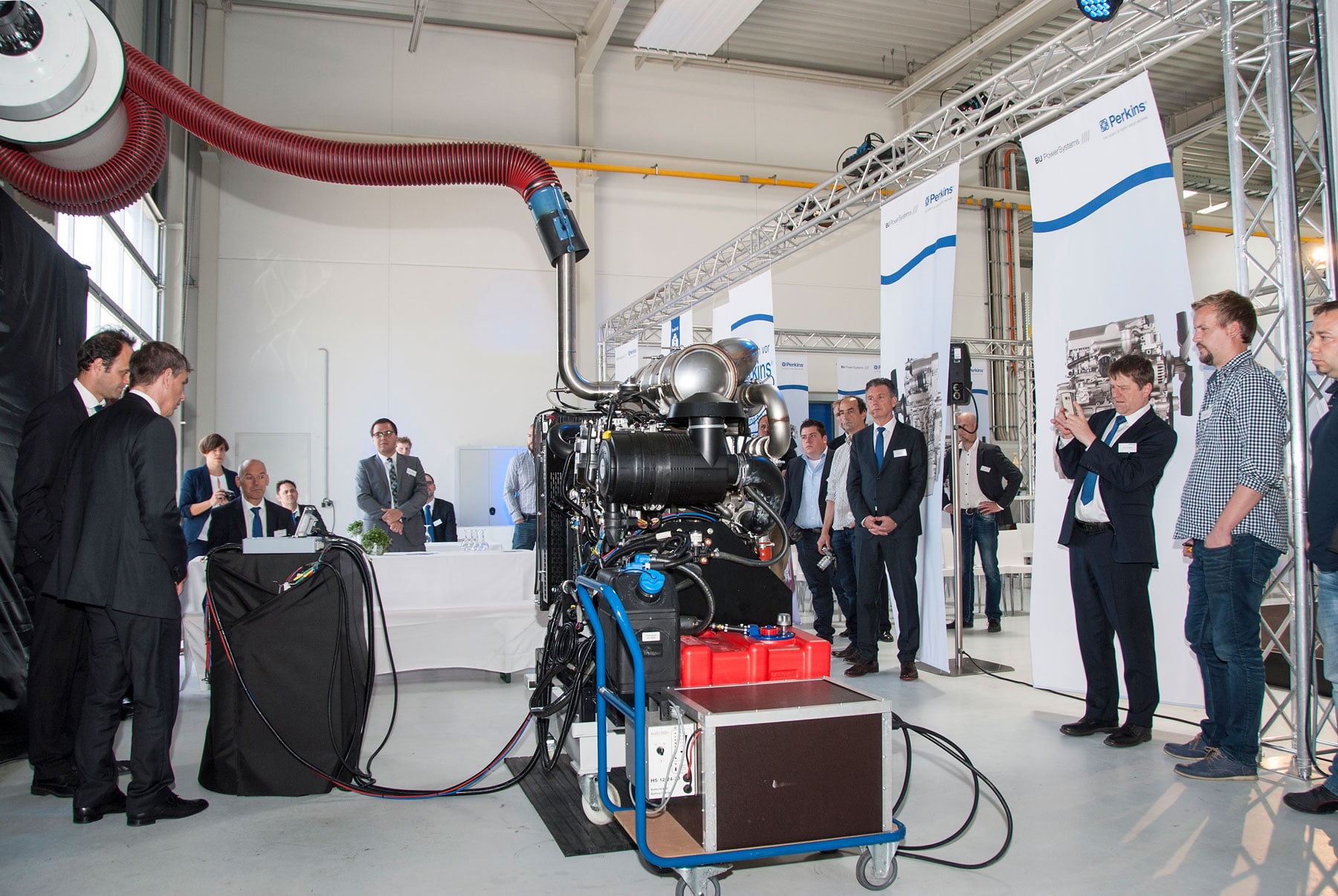Based on an extensive market survey and survey of global target customers in the field of mobile machinery manufacturers, Perkins has made the decision to develop a new engine platform in the power range 45 kW to 100 kW.
The result of one of the biggest investments in Perkins history is the Perkins® Syncro range, first unveiled at BAUMA 2016.
The name Syncro originated from the goal of “synchronizing” the development of a new industrial engine platform with the expectations of the OEM, thus meeting the expectations of a new engine generation.
Key features of the new engine family are:
- 4‑cylinder engine family with 2.8 liters and 3.6 liters, in the power range 45 kW to 100 kW.
- Modern engine concept with common-rail injection system to meet global emission standards; including EU Level 5 and U.S EPA Tier 4.
- Developed due to OEM requirements — in more than 80 different machine installation situations (2.8 liters and 3.6 liters).
- Designed to meet our customers’ worldwide performance, value and reliability needs, contributing to OEM, opening new markets and developing existing business.
- The high-power density in combination with the high torque available even at low engine speeds (up 22% compared to the good figures of the previous), OEM opens up the possibility to “downsizing”, towards more compact, more powerful machines with a excellent response.
- The aspired unique selling points of our OEM are also achieved by a simple electronic integration. In addition, there are numerous options with regard to the add-on components and the exhaust aftertreatment for adaptation — even under challenging installation conditions.
- The low fuel consumption compared to the modern engine concept (3, 6 liters minus 8% compared to its predecessor) can be further optimized by a specific adaptation of the power curve to the main operating points of the OEM machine.
- The 3.6‑liter engine offers machines adapted power curves up to 100 kW and 500 Nm of torque.
- The 2.8‑liter engine has an intercooler and provides machines with adapted power curves up to 55 kW and 325 Nm of torque.
- Another advantage for the OEM is the substantial equality of parts of 90% of the 2.8 liter and 3.6 liter engines, which differ externally only by a small difference in dimensions. This circumstance contributes significantly to the standardization of the installation situation and to the reduction in spare parts inventory.

